Learn how a travel photographer can mentally prepare to visit a new location.
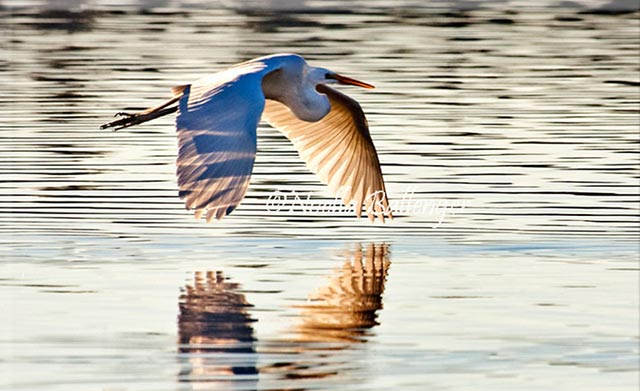
Water with the play of light on water and birds are a couple of my lifetime themes. Alternating bands of light and shadow on the water along with the golden light on the wings and within the reflection made for a glorious sunrise image.
I have the glorious occasion to travel to many new locations. My eyes and the eye of my camera will join to capture images of areas that are new to me and I know the challenges will be thrilling and artistically stimulating. Looking forward to adventures in these new and different places, I began to think about how a photographer can mentally prepare for travel to unfamiliar locations.
Most of the physical logistics are easy. By now, most of us have a reasonably good method of packing and protecting our camera gear. Hopefully, we won’t take more gear than we need and can carry comfortably. (It always seems that whatever lens I assumed I wouldn’t want on a trip, that will be the one I really need–and don’t have.)

This Dandelion glows with backlighting.
Mental preparation is a different story. When you take a trip, you’ve often been attracted to the destination because of images you’ve seen or stories you’ve heard. You set off with preconceived ideas of the kinds of photos you’ve admired and want to reproduce. This is human. For example, who doesn’t want to go to Africa and come home with the ultimate cheetah or lion photo? But what happens when you go and don’t find what you expect to find? Does it ruin the trip, or can you make lemonade from the lemons you were handed? Can you turn your lemons into something even better than what you originally planned? We need to do homework before we leave in order to be fully prepared.
An open mind is essential for a productive trip. I can remember standing on a platform near Alaska’s Brooks Falls. I had seen the beautiful “icon” bear image by Thomas Mangelsen of a salmon just entering a huge grizzly’s mouth, and I wanted that image, too. I had lots of company, because every time a salmon jumped anywhere near the bear standing at the edge of the falls, the sounds clicking around me almost drowned out the sounds of the falls! There’s nothing wrong with trying for the ultimate icon image, but don’t forget to look around for other images, too. There can be really good ones just waiting to be noticed if you broaden your view.
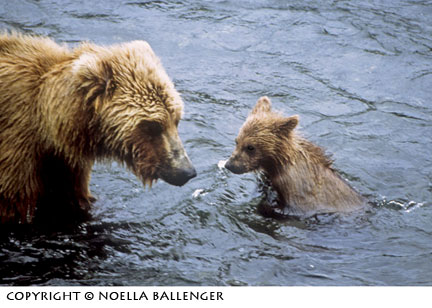
When I finally stopped trying for the ‘icon image’ of a bear catching a fish in its mouth, I began to look around. I saw this Mother Bear teaching her cub how to swim and fish. She was a good mom and soon the cub began to get the idea.
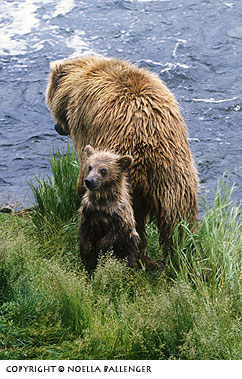
When they came out of the water a few minutes later, the cub noticed us on the viewing platform and began to show his curiosity and courage … from the safety of near-by Mother.
Flexibility is another essential for a travel photographer. We must be ready for our best laid plans to go out the window. I have seldom been on a trip during which something hasn’t happened to change my plans for me. And as plans change, we need to adapt. A change of plans isn’t always a bad thing. Sometimes the second choices turn out to be wonderful. We need to keep that open mind.
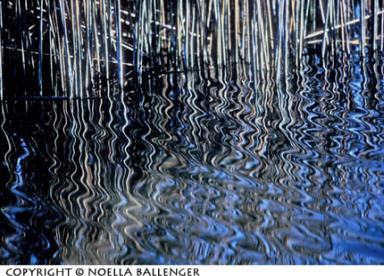
Again, water rippling slowly in this pond with lots of reeds caught my attention. At first I tried to put too much into the image and lost the feeling I wanted to capture. Finally, my eye settled on the most important part of the image … the squiggles of reflection of the reeds on the water.
Energy is vital for anyone who’s traveling, as the experience is frequently exhausting. Being well-rested means planning ahead so you don’t start a trip tired. It also means taking rest breaks along the way. On one of my scouting trips on the Oregon coast with my friend and guide, we had been pushing pretty hard checking out motels and restaurants. We enjoyed dinner and then decided to walk on the beach, leaving our camera gear in the car. It was apparent that I was both frustrated and frazzled, so as we walked, my friend introduced me to the fine art of agate hunting. (Agates are tiny rocks that are translucent when you hold them up to the light.) There I sat on the beach looking for an illusive agate, while the sun displayed a glorious sunset. I recharged my mental batteries as my fingers combed through thousands of small pebbles. When the sky finally darkened and we left the beach, I had a pocketful of little rocks and a whole new perspective. I hadn’t made a single photo of that glorious sunset, but I was brimming with ideas and energy once again. Take time to replenish yourself. While you may occasionally miss a glorious sunset, you’ll be a better photographer for taking the time to calm the mind so will be able to see more clearly.
Being willing to experience is another essential trait to have when you’re on a photographic adventure. This ability ties into having an open mind, a high energy level, and flexibility. For example, I was in Prague with my sister, and we were staying in a small hotel on the outskirts of town. The subway was right around the corner, and she insisted we take it. I agreed, in spite of the fact that subways are definitely not “my thing.” Just when I thought I wouldn’t want to experience something new, I found it to be fun. Step out of the box, try new experiences and photo opportunities can be there waiting for you – different lighting conditions, different people, and new photo subjects. Being willing to experience it all as it happens becomes a chance for you to grow as a person and an artist.
Try stepping out of your normal mode of seeing. There’s nothing like refreshing yourself by thinking about your photography in new ways, by experimenting. Sometimes you just have to tear loose. “What if I tried it photographing this way, or that way, or made my image into something entirely new and unlike anything I’ve ever done before?” These “what-if” questions should be a perpetual chant in your mind. Make an image the way you normally would, then ask yourself the “what if” question.
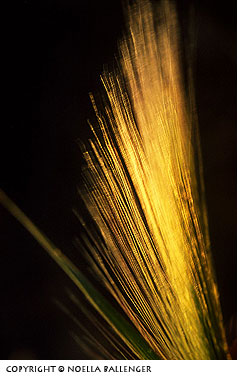
When I am traveling, I keep themes in mind. Most people call weeds ugly, but I like to show everyone just how beautiful they can be.
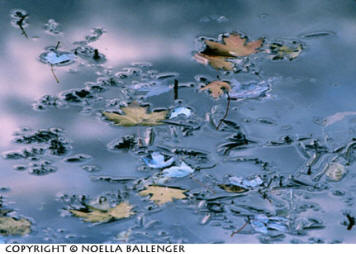
Early dawn in Canada. It was cold and overcast. I wondered why I was wandering around when I could be snuggled back in bed. What in the world was there worth photographing? This is when I pull up a theme and begin working on it. I found these leaves floating slowly and with the overcast and dull light, you could really see that the water was elastic around the edges. I got busy, the time flew and it was one very creative morning photograph.
I like having life-long themes to work on when I travel – birds, weeds and water being three of my favorites. I can find them all almost any place I travel. Whatever your themes are, make a list of new themes to try. They’ll push you into seeing your surroundings in a different way. For example, maybe try vibrant colors, shapes (and this includes overlapping shapes and abstract shapes), and movement. Think more about how to bring animation into your still images, so movement will be a major theme.
Learn to prepare mentally for any scheduled or even unscheduled trips and see how your images can change and delight you.
by Noella Ballenger
All text and photos: © Noella Ballenger. All Rights Reserved.

Leave a Reply